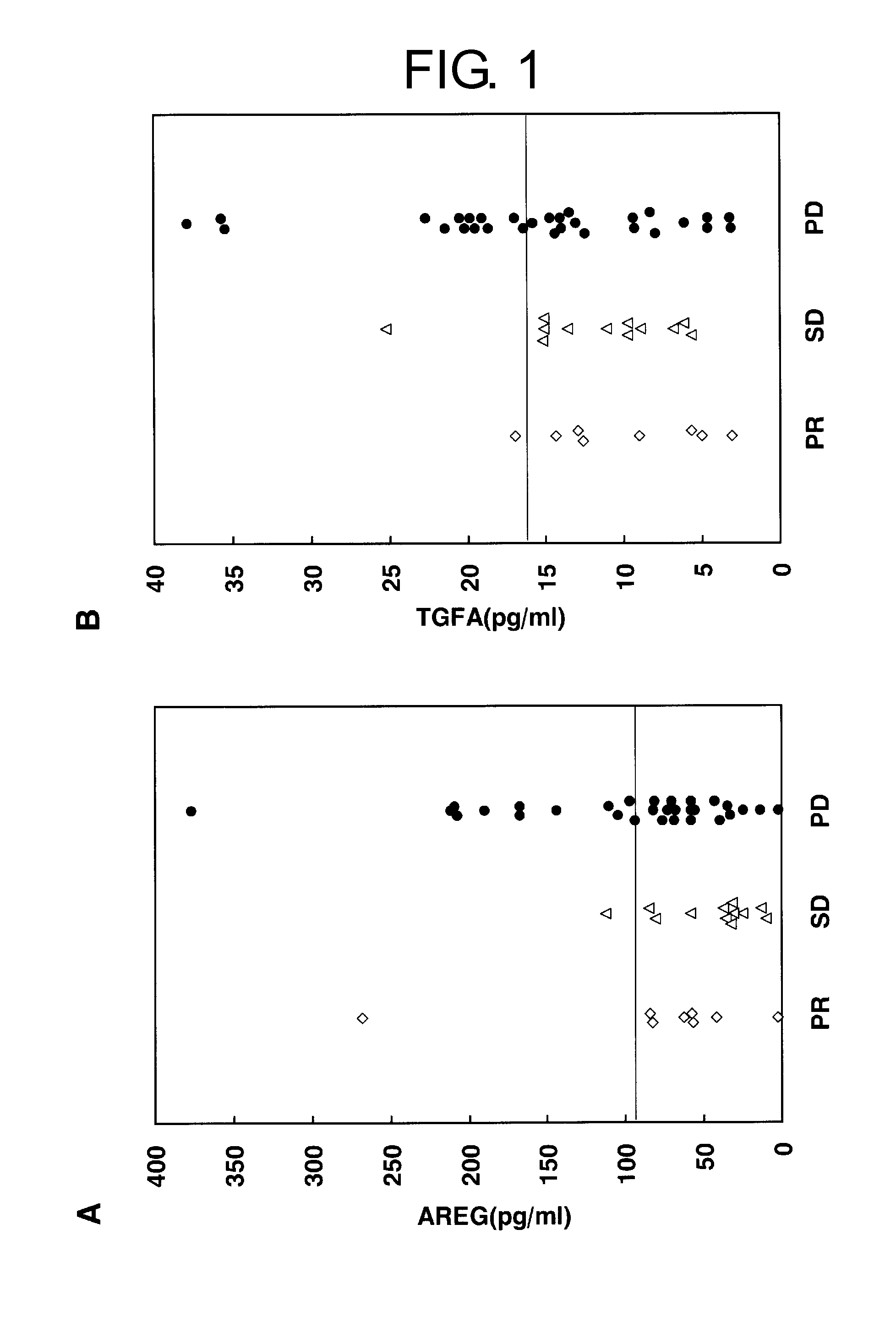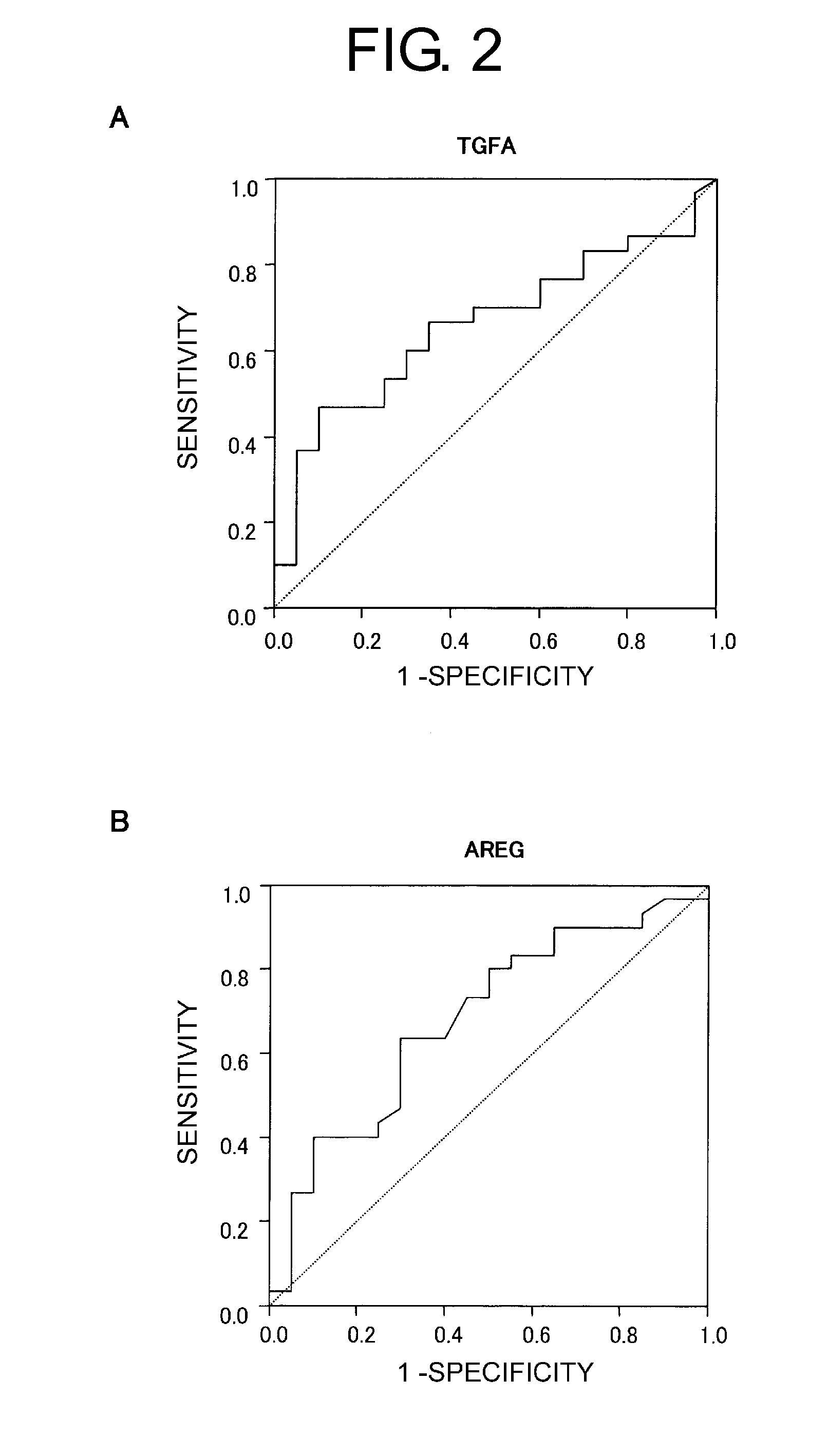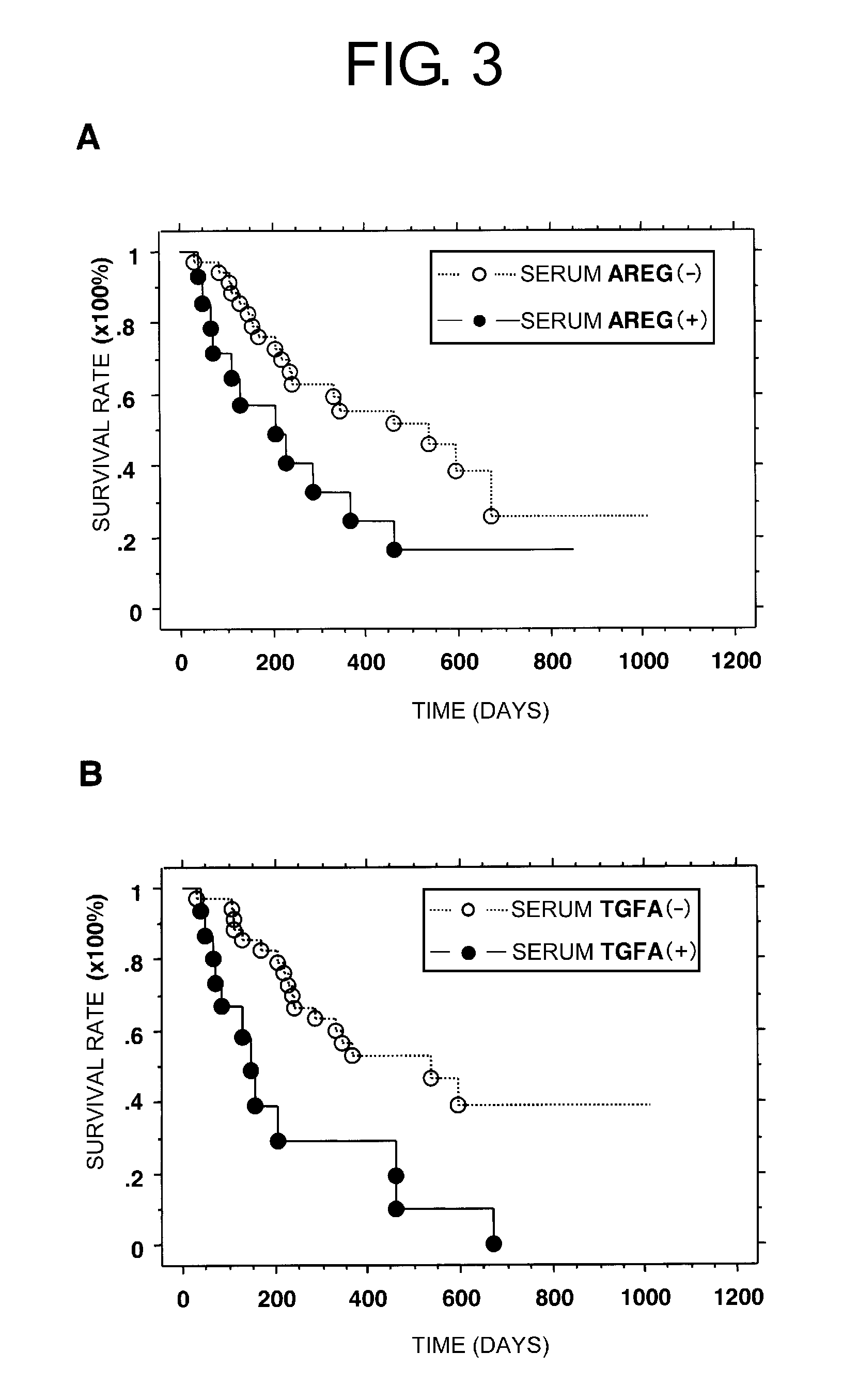Methods for treating lung cancers
a lung cancer and treatment method technology, applied in the field of lung cancer treatment, can solve the problems of no known indicators that enable an accurate distinction between patients, no factors examined so far, and inability to show clearly that patients maintaining a stable condition could gain some survival advantag
- Summary
- Abstract
- Description
- Claims
- Application Information
AI Technical Summary
Benefits of technology
Problems solved by technology
Method used
Image
Examples
example 1
Clinical Information
[0237]Fifty patients who satisfied certain conditions were each administered a daily dose of 250 mg of gefitinib. The median age of the patients was 62 years old (ranging from 30 to 80 years old); 36 patients were male and 14 were female (Table 3).
[0238]
TABLE 3A. Association between NSCLC patients' characteristicsand response to gefitinib therapyPR + SD (disease-PDcontrolled cases)(progressiveTotaln = 20disease case)Variablesn = 50(8 PR + 12 SD)n = 30P valueGenderMale361224NSFemale1486Age in yearsMedian60.562.0Range47-7630-80Histologic typeADC401525NS*SCC743ASC312Disease stageIIIB936NS**IV28919Recurrence1385post surgeryBone metastasisYes1899NSNo321121Brain metastasisYes17611NSNo331419ECOG performance status014770.037***+126121421019Number of prior chemotherapy1291316NS***21028>21156Prior cisplatin or carboplatin administrationYes341321NSNo1679Smoking historyNever181170.035*****Former15411Current17512Serum AREGPositive142120.026+Negative361818Serum TGFAPositive152...
example 2
Serum Amphiregulin / Transforming Growth Factor-α Concentrations, Clinicopathologic Characteristics, and Responsiveness to Gefitinib Therapy
[0241]As a result of examining genes expressed in tumors of progressive non-small-cell lung cancer patients who had been treated with second-line to seventh-line gefitinib monotherapy by cDNA microarray analysis, amphiregulin and TGFA were found to be significantly overexpressed in PD cases, but hardly expressed in PR cases (P values in the permutation tests were 9.3×10−12 and 0.0095, respectively; Kakiuchi S, et al., Hum. Mol. Genet. 2004; 13:3029-43).
[0242]To establish a routine and less invasive clinical testing method for predicting responsiveness to a drug, two proteins were used as serological markers. More specifically, ELISA was carried out for both proteins using serum samples collected from 50 different non-small-cell lung cancer patients treated with gefitinib. “Positive” or “negative” judgements were made based on cutoff values for eac...
example 3
Expression Status of Amphiregulin and Transforming Growth Factor-α in Lung Cancer Tissues Obtained by Random Sampling
[0250]In order to examine the clinical significance of amphiregulin and TGFA overexpression, the expression of amphiregulin and TGFA proteins was also examined by means of tissue microarrays using tissues collected from 449 non-small-cell lung cancer patients who had undergone surgery, selected by random sampling. As reported previously, amphiregulin was mainly detected at the cytoplasm and / or nucleus of tumor cells (Ebert M, et al., Cancer Res. 1994; 54:3959-62.; Bostwick D G, et al., Prostate 2004; 58:164-8). TGFA was mainly stained at the cytoplasm of tumor cells.
[0251]As shown in Table 6, gender (higher in males; P<0.001 according to the Fisher's test), histological classification (higher in nonadenocarcinomas; P<0.001 according to the Fisher's test), and smoking history (higher in current and former smokers; P<0.001 according to the Fisher's test) were significan...
PUM
| Property | Measurement | Unit |
|---|---|---|
| body weight | aaaaa | aaaaa |
| pH | aaaaa | aaaaa |
| pH | aaaaa | aaaaa |
Abstract
Description
Claims
Application Information
 Login to View More
Login to View More - R&D
- Intellectual Property
- Life Sciences
- Materials
- Tech Scout
- Unparalleled Data Quality
- Higher Quality Content
- 60% Fewer Hallucinations
Browse by: Latest US Patents, China's latest patents, Technical Efficacy Thesaurus, Application Domain, Technology Topic, Popular Technical Reports.
© 2025 PatSnap. All rights reserved.Legal|Privacy policy|Modern Slavery Act Transparency Statement|Sitemap|About US| Contact US: help@patsnap.com



